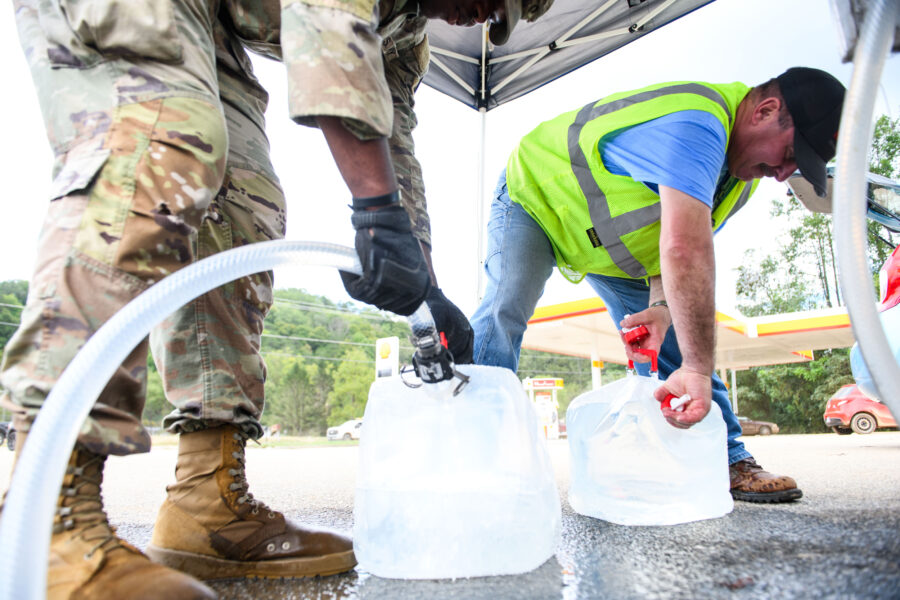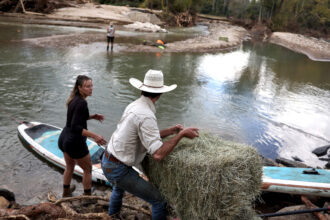Killer Whales in Chile Have Begun Preying on Dolphins. What Does It Mean?
In six years studying orcas off Chile’s coast, marine biologist Ana García-Cegarra had never witnessed anything like what she saw in May 2023. In the vast Pacific waters near Antofagasta, a killer whale hurled a small dusky dolphin into the air before devouring it. Moments later, four more orcas arrived to join the feast.
“Such a thing has never been recorded in Chilean waters,” García-Cegarra says.
García-Cegarra, a researcher at the University of Antofagasta, had been tracking this pod, led by a matriarch named Dakota, and four more orcas. Until that moment, her team believed this family fed exclusively on sea lions. The sighting, reported by the authors last week in Frontiers in Marine Science, has reshaped their understanding of the pod’s behavior.
Explore the latest news about what’s at stake for the climate during this election season.
Now, scientists believe the discovery offers crucial insights in a region heavily impacted by global warming and pollution.
Orcas are elusive creatures, known for their speed and rare appearances at the surface, which makes them difficult to track. García-Cegarra’s team hasn’t monitored Dakota’s pod alone. Since 2018, they’ve collaborated with local tour operators and fishermen in a citizen science initiative. Over the years, these partners have submitted photos and videos, helping researchers document two pods of five orcas, their range and feeding patterns.
The team had previously observed the orcas chasing dusky dolphins, which are abundant in the area, but had never witnessed the predatory behavior they captured through drone footage.
Orcas inhabit oceans across the globe, and while there is only one species, they are divided into multiple ecotypes—distinct groups characterized by shared physical traits and behaviors, including hunting strategies and prey preferences, García-Cegarra explained. There are five ecotypes in the Northern Hemisphere and another five in the Southern Hemisphere. The orcas of the Humboldt Current, which reaches from Antarctica to South America, have yet to be classified into an ecotype, and their documented dolphin-hunting behaviors offer clues not only to their grouping but also to the waters in which they swim.
“It’s a fascinating discovery,” said Josh McInnes, a marine biologist at the University of British Columbia in Canada, who has studied orcas along California’s coastline and was not part of the new paper. “The more we know about their behavior and what they’re eating is important because they are in a place where a lot of things are changing.”
The Humboldt Current, also called the South Pacific Current, is a cold ocean stream that winds its way northward along South America’s rugged western coast. Its icy waters shape the region’s climate and sustain one of the richest marine ecosystems on Earth.
Rising ocean temperatures are reshaping species’ distribution and behavior, driving key fish like anchovies and sardines to migrate toward cooler waters. This shift disrupts food chains that support top predators such as orcas, McInnes said. Additionally, warmer waters are fueling more frequent harmful algal blooms, which deplete oxygen and create dead zones, endangering the survival of fish and other marine life.
“Orcas are the top predators of marine ecosystems. Changes in their diets may be an indicator of a shift in the distribution of their prey due to climate change.”
— Carlos Olavarría, marine biologist
While researchers cannot yet say for sure if Dakota and her pod altered their diet in response to these changes, gathering more current data on their feeding habits will pave the way for future conservation efforts. This information also allows scientists to use orcas as vital indicators of the ecosystem’s overall health.
“Orcas are the top predators of marine ecosystems. Changes in their diets may be an indicator of a shift in the distribution of their prey due to climate change,” said Carlos Olavarría, a marine biologist at Chile’s Center for Advanced Studies on Arid Zones, who was not part of the study.
The pod, made up of two males, a juvenile, a calf and Dakota, navigates waters that are tainted by pollution from mining companies extracting resources from the Atacama Desert along the coastline. Antofagasta also has a high concentration of plastic pollution.
García-Cegarra’s team has also investigated pollution in spiny porpoises, the smallest dolphin species inhabiting the waters of Antofagasta. Their research revealed alarming concentrations of copper, arsenic and lead within these creatures. This would be a significant threat to Dakota and her pod if they start hunting this species, too. Heavy metals accumulate as they move up the food chain, a process called biomagnification.
Over the past few decades, some killer whale populations have dwindled to nearly the brink of endangerment. A poignant example is the Transient killer whales of the eastern North Pacific, whose numbers have plummeted from 22 to just seven since the devastating Exxon Valdez oil spill in 1989.
When survival is on the line, scientists say, every small detail of orca behavior is crucial for developing conservation strategies. “These survey efforts are a big thing,” McInnes said.
About This Story
Perhaps you noticed: This story, like all the news we publish, is free to read. That’s because Inside Climate News is a 501c3 nonprofit organization. We do not charge a subscription fee, lock our news behind a paywall, or clutter our website with ads. We make our news on climate and the environment freely available to you and anyone who wants it.
That’s not all. We also share our news for free with scores of other media organizations around the country. Many of them can’t afford to do environmental journalism of their own. We’ve built bureaus from coast to coast to report local stories, collaborate with local newsrooms and co-publish articles so that this vital work is shared as widely as possible.
Two of us launched ICN in 2007. Six years later we earned a Pulitzer Prize for National Reporting, and now we run the oldest and largest dedicated climate newsroom in the nation. We tell the story in all its complexity. We hold polluters accountable. We expose environmental injustice. We debunk misinformation. We scrutinize solutions and inspire action.
Donations from readers like you fund every aspect of what we do. If you don’t already, will you support our ongoing work, our reporting on the biggest crisis facing our planet, and help us reach even more readers in more places?
Please take a moment to make a tax-deductible donation. Every one of them makes a difference.
Thank you,
David Sassoon
Founder and Publisher
Vernon Loeb
Executive Editor
Share this article
- Republish
Disclaimer: The copyright of this article belongs to the original author. Reposting this article is solely for the purpose of information dissemination and does not constitute any investment advice. If there is any infringement, please contact us immediately. We will make corrections or deletions as necessary. Thank you.








